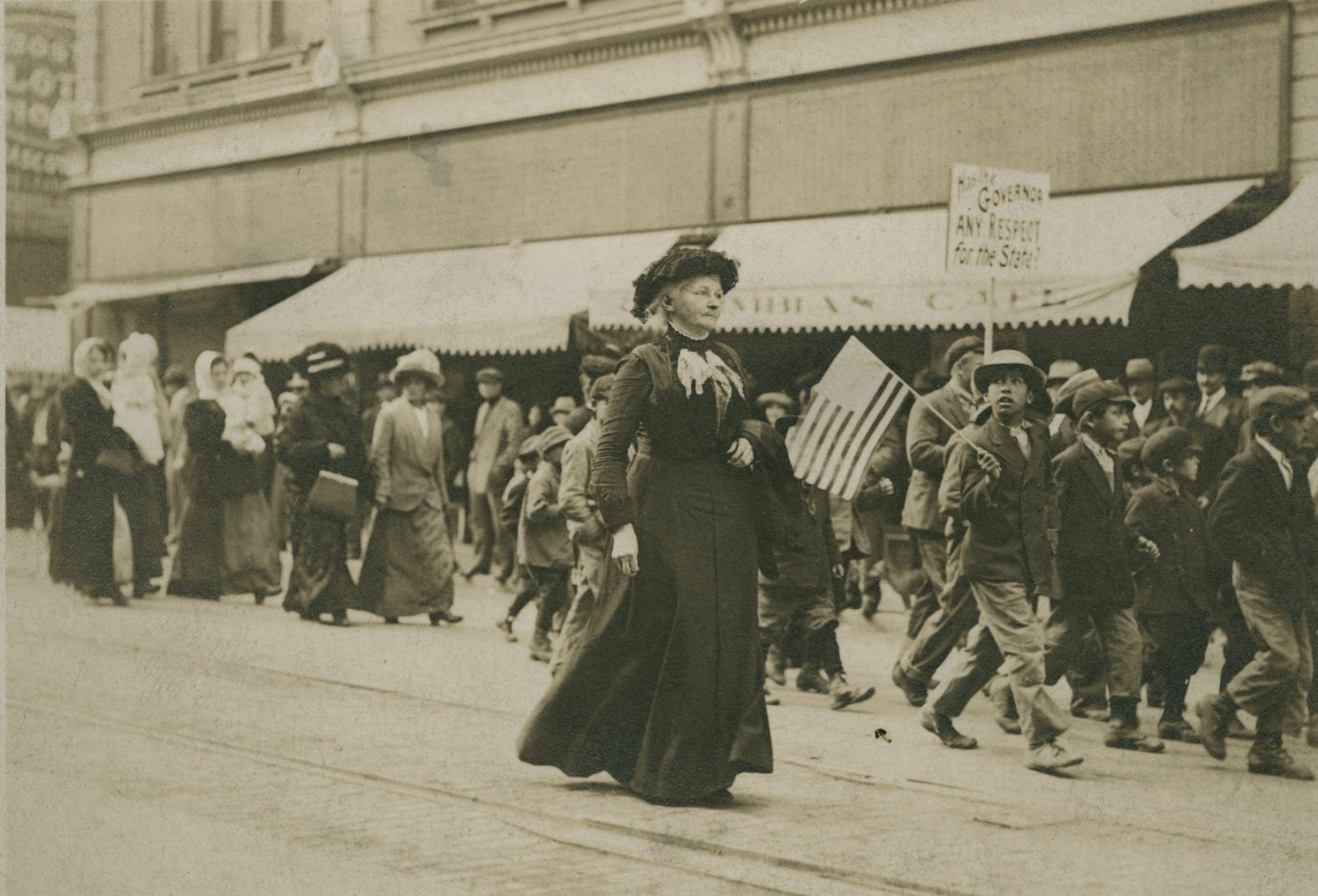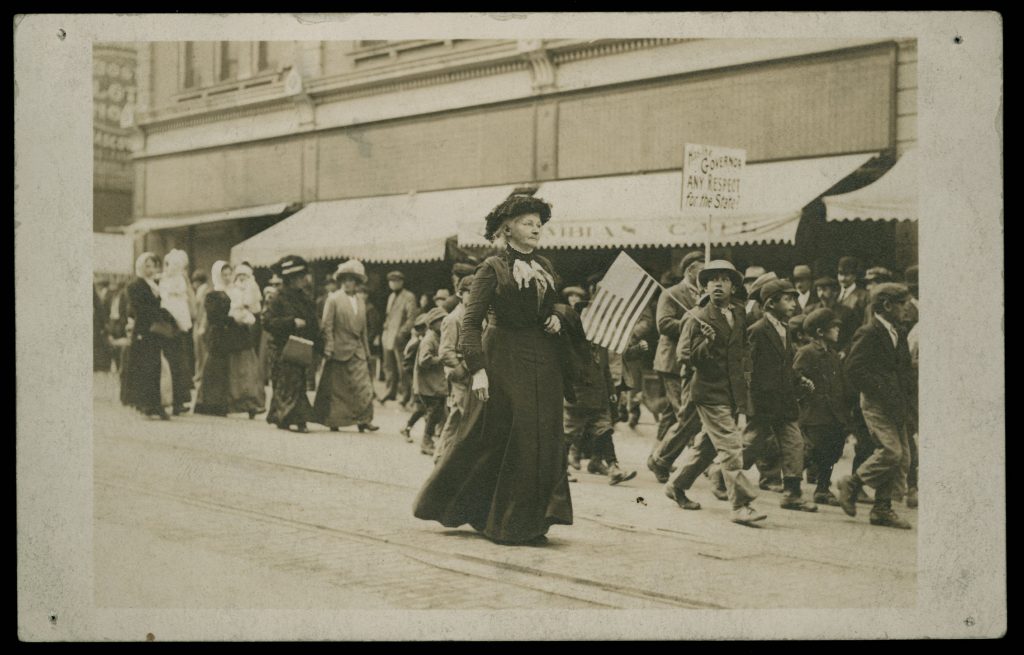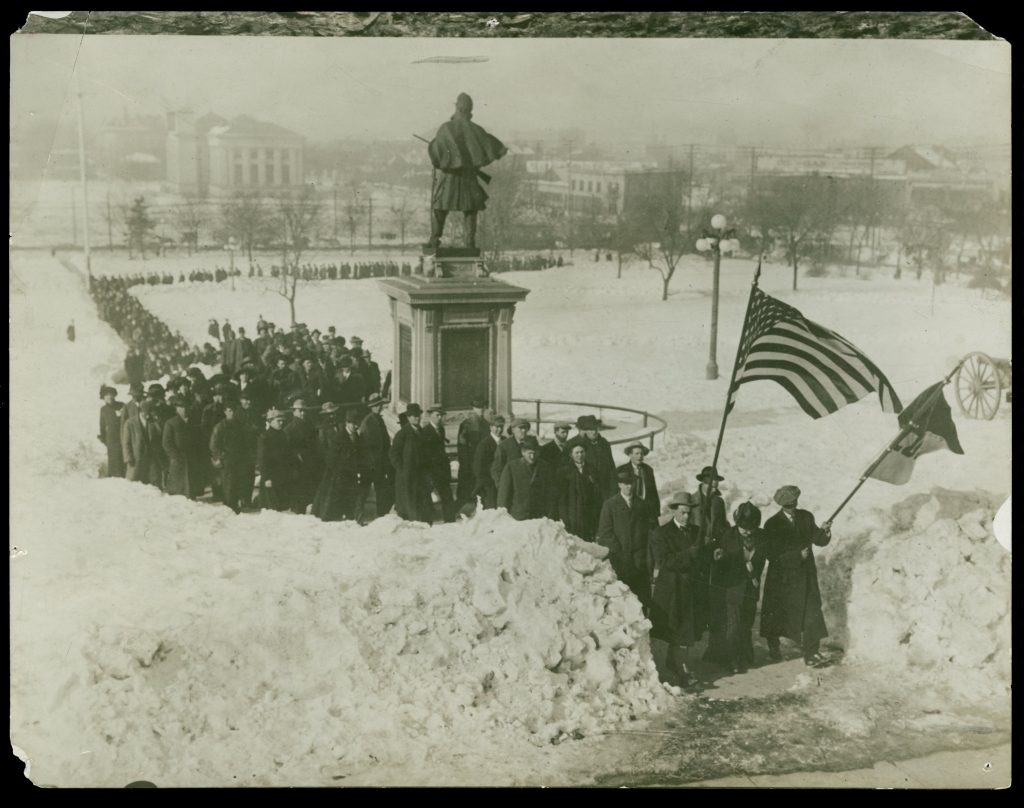Curriculum Connection: Child Labor, Community, Labor movement, Progressive Era, Women’s History, Work
From the Charles H. Kerr Publishing Company records at the Newberry Library.
Materials – Available for Download in the Downloads Tab:
- A copy of the “Who Was Mother Jones?” activity
- Copies of the photographs used in the activity
Show your students these photographs of social activist Mary “Mother” Jones. Use the background material at the end of this activity whenever you think it will encourage students to ask more questions and think more about Mother Jones.
The first photograph was taken in Ludlow, Colorado, during the 1914 miners’ strike. Mother Jones is with a miner’s family in their camp. The third photograph shows Mother Jones leading the miners to confront the governor of Colorado in Denver. The others have no more information, except that they are connected to her labor movement activities.
For younger students, consider giving them a few minutes to look at all the images and then say, “The woman in these photographs was called Mother Jones. Tell me what you think she was like and what kinds of things you think she did.” Another option is to show the pictures one at a time and discuss each one in order to build a picture of Mother Jones.
For older students, have them write quick notes about what they think each image shows. Then, after they have viewed all the images, ask a series of questions. Possible questions are listed below.
Click on each image for a high-resolution version that can be displayed for your class.
Potential Questions
- What do all the photos have in common?
- What did you think about the older woman in the first photograph when you first saw it?
- Did you recognize the same woman in later photographs? What is she doing in each photograph?
- As you viewed the different photographs, did your idea about who she was change?
- What kind of information do these sources give you about the labor movement or the Progressive Era?
- What questions do you have about these photos? Where could you find answers to these questions?
Background
Mary “Mother” Jones was born in Ireland in 1837. As a child, she saw people starving during the potato famine. The famine caused her family to move to Canada, where Mary grew up and was educated. She left home as a young woman and, right before the Civil War began, married George Jones. They had four children. In 1867, her husband and children died in a yellow fever epidemic. When she was thirty, she went to live in Chicago. She opened a small dressmaking shop, but that was destroyed in the Great Chicago Fire of 1871. She then lived in poverty until the last years of the nineteenth century. And then she created “Mother Jones.”
She started wearing old-fashioned clothes and exaggerating her age. She declared that she was the mother of all who were poor, all those who suffered because of poor working conditions. She fought against child labor and for the rights of all working people. She spoke out loudly and fiercely against injustice, and people paid attention to her. She became one of the most famous and best-loved figures in the labor movement in the United States.
Additional Resources
- “The History of Mother Jones,” MotherJones.com
- “Mother Jones,” AFLCIO.org
- “Mary Harris Jones,” National Women’s History Museum
Download the following materials below:
- A copy of the “Who Was Mother Jones?” activity
- Copies of the photographs used in the activity







